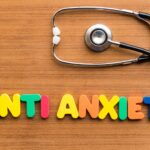At least 2.2 billion people worldwide have a vision impairment. One billion of them could have been prevented or have gone untreated.
Any changes in your vision may make you ask yourself, “should I see an eye doctor?” It can be difficult to tell whether a slight change in your vision is a temporary problem or a sign of a severe issue.
Knowing what to look for lets you get early treatment and maintain your eye health. Read on for three signs to help you decide when to see an eye doctor. If after reading this you decide it is time to call an eye doctor, just Google eye doctor Melbourne to read reviews and choose an eye doctor in the Melbourne area.
1. Eye Pain or Headaches
Eye pain and fatigue are common issues that almost everyone experiences from time to time. They can be attributed to allergies, a lack of sleep, or staring and screens for too long. A few lifestyle changes can make the pain go away on its own.
The key to knowing when to see an eye doctor for eye pain is paying attention to how long it lasts. If it stays for more than a few days, it can signify more serious issues such as an infection or changes in vision.
Another type of pain may follow; headaches. See an eye doctor if they become frequent.
2. Flashes, Floaters, Spots, or Halos
Bodily tissues occasionally embed themselves into the vitreous, a gel-like tissue in our eyes that gets more fluid over time. This causes floaters, flashes, or spots and becomes more common with age.
Schedule an emergency eye exam if you notice a large cloud of floaters accompanied by light flashes. This could be a sign of retinal detachment.
Halos around lights may indicate astigmatism or presbyopia. Make sure to see an eye doctor for treatment, especially if you see them in the middle of the day.
3. Problems With Near, Distant, or Night Vision
At least 164 million Americans wear glasses, and 45 million wear contacts. If you have corrective lenses and still notice near or far vision problems, see an eye doctor and change your prescription. Even a slight difference can lead to eye strain.
Problems with night vision occur with age but are also one of the first signs of cataracts. It’s the most common vision problem in the world and affects over 94 million people. Your eye doctor may recommend surgery or another form of treatment that slows their progression.
Schedule regular eye exams at least once a year, even if you don’t have these symptoms. If you want to know more, read about healthy eyes here.
More Ways to Know When to See an Eye Doctor
Vision changes are subtle and often go untreated. Look for essential signs to decide when to see an eye doctor.
Eye pain and headaches usually last a few days. Seek out treatment if they won’t go away on their own.
Floaters followed by flashes of light are signs of retinal detachment. Halos during the day come from presbyopia and astigmatism. Both require an eye doctor’s care.
Get a new prescription if you struggle with near or far vision. Night vision issues are early signs of cataracts.
Read the rest of our content for more tips on maintaining your eye health.




